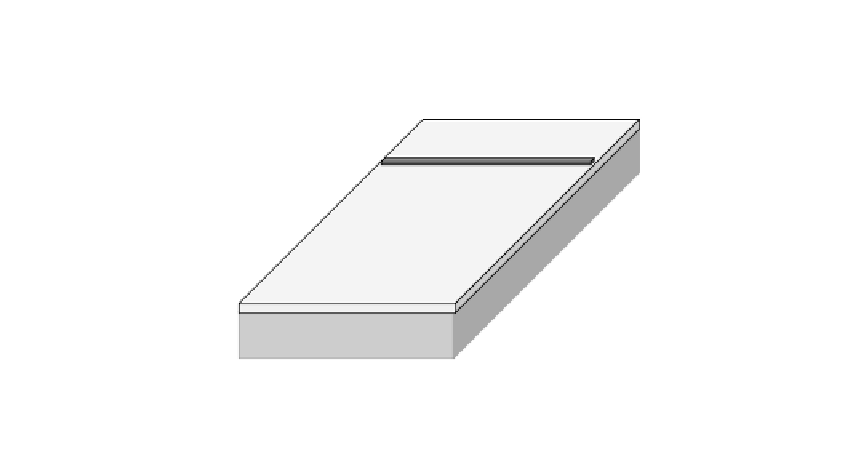Biomedical Engineering Reference
In-Depth Information
Silver
d
Silver
l
h
Nanocomposite
film
Glass
FIGURE 9.8
Schematic of devices employed for the determination of the specific resistance.
means of ultrasonic equipment. The final product contained the emeraldine base (EB)
form of PDMA-MWNTs nanocomposite material. The EB form was completely soluble in
chloroform. Langmuir-Scahefer (LS) films were obtained by spreading solutions of
PDMA-MWNTs nanocomposite and dissolving 5 mg of the material in 100 ml of chloro-
form. The related compression isotherms were recorded in a manner similar to our earlier
investigation on POAS-MWNTs nanocomposite (76). The cyclic voltammetry was useful
in determining the oxidation states of PDMA-MWNTs nanocomposite. The steric hin-
drance and the simultaneous presence of MWNTs in the polymeric matrix are responsible
for the decreased number of redox states and also affect the stability of the nanocompos-
ite ES form, giving a possible explanation for the quick undoping process revealed during
the experiments. This phenomenon was discovered by observing the quick color change,
from green to violet, of the films of material deposited on a substrate for further charac-
terizations. The nanocomposite (PDMA-MWNTs) showed a progressive spontaneous
undoping process along the time associated with the instability of the doping agent, con-
stituted by HCl, inside the polymeric matrix. The study of the undoping process revealed
that this phenomenon is related to the synergetic effect of the steric hindrance of the sub-
stituents on the aromatic rings and the presence of MWNTs inside the polymeric matrix.
The conducting properties connected to a doping-undoping equilibrium in the presence
of the doping agent were also investigated. To verify whether or not the deposited films
could be affected by basic vapors in the environment, the various samples were trans-
ferred in a sealed container. This simple experiment showed that the undoping process
was spontaneous and did not need the presence of basic chemicals to be carried out. Since
they had shown a spontaneous undoping process, the samples were tested very quickly to
obtain accurate values of the specific resistance. To investigate the electrical properties of
the material focused on industrial prospective, other configurations were tested. The dep-
osition of thin films of material with adequate thickness (several microns) was performed
by spin-coating technique. This method allowed us to fabricate thicker films in a very
short period of time.
The fabricated devices were connected to the electrometer by means of silver wires and
silver paint, as shown in the schematic of Figure 9.8. In Figure 9.9, the
V
/
I
characteristics












